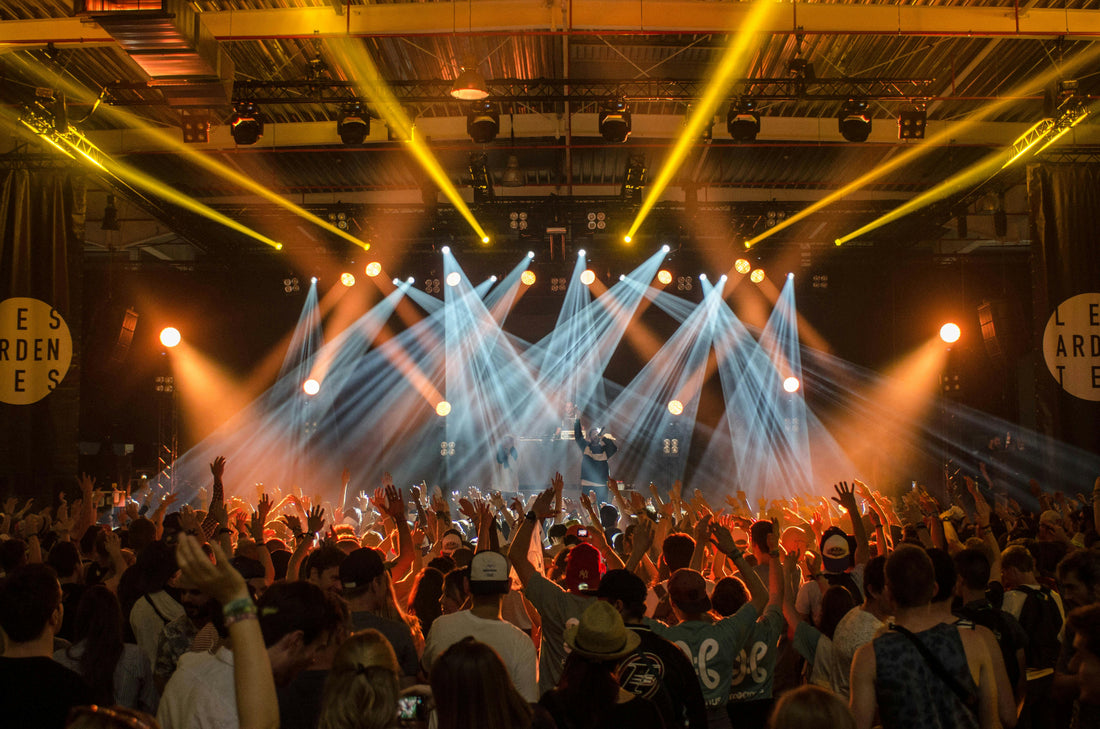
Stage Lighting 102: Advanced Techniques
Share
Lighting is an art form that transforms spaces and tells stories. If you’ve mastered the basics of stage lighting, it’s time to take your skills to the next level. Welcome to Stage Lighting 102, where we’ll explore advanced techniques, tools, and concepts to elevate your lighting designs.
1. Understanding Lighting Design Concepts
Color Theory in Lighting:
- Colors can evoke emotions and set the tone for any performance. For instance, blue often conveys calmness or sadness, while red signifies passion or danger.
- Use color gels or LEDs to experiment with different hues. Blend complementary colors for contrast or analogous colors for harmony.
Balancing Intensity and Focus:
- Proper intensity ensures that the audience’s attention is drawn to the right areas. Too much light can be overwhelming, while too little can obscure the subject.
- Techniques like three-point lighting (key, fill, and backlight) add depth and direct focus.
2. Exploring Specialized Lighting Equipment
Intelligent Lighting:
- Devices such as moving head lights and gobo projectors add versatility. These lights can pan, tilt, and change colors dynamically.
- Intelligent lighting is perfect for concerts, where rapid transitions and patterns are essential.
Accessories and Enhancements:
- Use barn doors to shape light beams or diffusers to soften the output.
- Experiment with gobos (templates placed in front of a light source) to project patterns or textures onto the stage.
3. Techniques for Creating Dynamic Effects
Layering Lights for Depth:
- Combine multiple lighting sources from different angles to create a three-dimensional effect.
- Add backlighting to separate subjects from the background, creating a halo effect.
Synchronization with Music or Action:
- Use DMX controllers to sync lighting changes with musical beats or stage cues.
- Dynamic effects such as strobing or color changes can amplify the energy of a performance.
4. Advanced Troubleshooting and Optimization
Avoiding Common Pitfalls:
- Shadows: Ensure even lighting across the stage to minimize harsh shadows.
- Hotspots: Adjust focus and intensity to prevent overly bright areas.
Optimizing for Venues:
- Each venue presents unique challenges, such as ambient light or space constraints.
- Adapt your lighting setup to suit the venue’s size and audience perspective. Smaller spaces may benefit from fewer, softer lights, while larger venues require more powerful and directional sources.
5. Practical Application: Real-World Scenarios
Lighting a Concert:
- Focus on creating a visually captivating atmosphere. Use moving lights and color washes to highlight key moments.
- Sync lighting transitions with musical tempos for a seamless performance.
Theatrical Lighting:
- Convey time, place, and emotion through lighting. For example, warm amber tones can represent a sunrise, while cool blues might suggest nighttime.
- Use gobos to create scene-setting patterns, such as leaves or window shadows.
Event Lighting:
- For weddings, aim for elegance with soft white lights and uplighting. For corporate events, maintain professionalism with neutral tones and minimal distractions.
Conclusion
Advanced stage lighting is about storytelling and creating immersive experiences. Experiment with these techniques to discover what works best for your unique style and projects. Dive deeper into the world of lighting design by exploring online tutorials, attending workshops, and following industry professionals.
Stage lighting is a journey of creativity and technical expertise. Let your designs shine bright and captivate audiences like never before.
